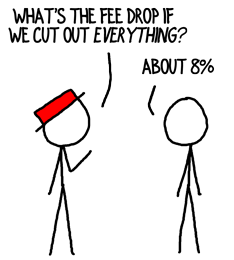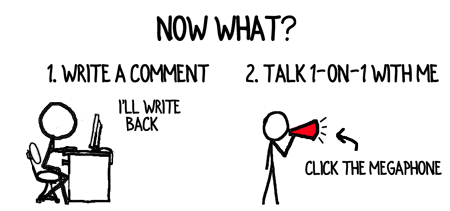Once in a blue moon a consulting prospect will sign a proposal without asking for any changes or concessions. When the moon is white, yellow, green or invisible to the eye, you’ll probably have to negotiate to win the project. Below, in their barest form, are 15 best practices that will help you close more projects at higher values with more clients.
15 Negotiation Best Practices for Consultants
1. Believe in your own value.
2. Walk in knowing you’re willing to walk away.
3. Always negotiate with the decision maker.
4. Get all objections on the table before you respond to any of them.
5. Fully understand the objection before responding.
6. Start with the easiest objections then move to the hardest.
7. Be prepared for common objections.
8. Defend your prospect’s point of view first.
9. Be prepared with smart trades that add value for the client and you.
10. Protect the project’s requirements for success.
11. Start with the highest value and negotiate down.
12. Keep reductions in fees commensurate with reductions in value.

13. Never give different pricing to different parts of the same organization.
14. Don’t sacrifice business for “negotiation best practices.”

15. …what do you think?
I had a few more best practices in mind, but I want to hear from you to fill out the list. What best practice(s) do you always keep in mind when negotiating with a consulting prospect to win a project?
Add your ideas and experiences in the comments section below, and I’ll write back!
You may also enjoy these related articles:
Negotiation Best Practices (a couple of practices explored in more depth)
“The Fee is Too High” Objection
Text and images are © 2024 David A. Fields, all rights reserved.

 David A. Fields Consulting Group
David A. Fields Consulting Group 

Tell the weakness first and then the strength.
Korel, that sounds like an interesting strategy, but I’m not 100% sure I know what you’re suggesting. If you have a moment, can expand on that practice?
David, it is about establishing trustworthiness advertisers use with success: Before presenting strongest argument, they present a weakness.Then continue with “However”…Strong points overwhelm the weakness. In the context of credibility, it makes your strongest argument shine.
Thanks for clarifying, Korel. Very helpful.
Very solid guidelines to create a win-win negotiations.
Thanks, Tom. “Win-win” is definitely a key. Oft said, but seldom pursued in the heat of negotiations. Knowing your prospect’s concerns and your potential trades in advance are the best ways to set yourself up for adding value to both sides during the negotiating process. And it’s very rewarding when you get to the final contract.
Build in choices from the beginning so the client has room to move without jeopardizing the “requirements for success.”
We recently created a nice win when we offered the core project at a flat fee and offered two add-ons that we thought he would greatly value. We priced it so all three together would be just above a round number.
He wanted the core project most of all but asked if he could get all three for that round number so he could feel like he’s getting a deal. Why, yes, I said.
“Why, yes, my friend, I’d be happy to do all of that for $100,000 rather than $101,230.” I like your style, Jaime! Plus, you’re absolutely right that offering alternatives in the proposal puts you in a much better place when it comes time for later discussions. Congratulations on the recent win.
To move beyond the tactics of negotiations to its strategy, I found “3-D Negotiation” by Lax and Sebenius a great help. One (of 3) strategies is to emphasize on the alternatives to reaching any agreement (BATNA) for both sides. They recommend spending time maximize your alternatives and minimizing your prospect’s. We do this naturally when we help prospects see how things will get worse if they don’t act soon. And, we can do #1 and #2 in your list more easily if we maximize our own alternatives to an agreement.
Wow, Diana. It’s been a long time since I’ve encountered BATNA (best alternative to a negotiated agreement). Fisher & Ury were required reading back in the (long ago) days when I was in b-school. You’re right that if we know walking in that our best alternative is to walk out (rather than take a bad project) it’s much easier to walk away. That’s definitely a strategy worth keeping in mind. Thank you offering the reminder of that valuable approach.
Sound logical, sound good.
If you can win on the logic (non-emotional) side and the good (emotional) side, then all is well, indeed. Thank you for the feedback, Mohamed.